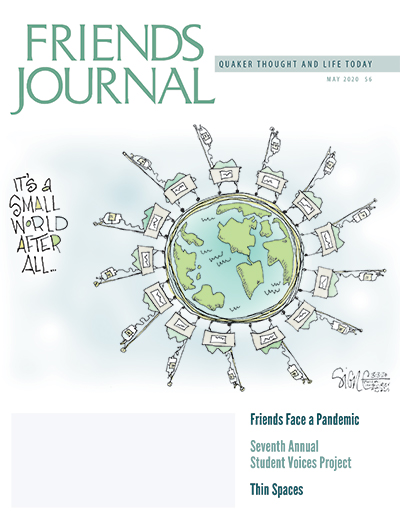In seventh and eighth grade, while attending Newtown Friends School (NFS), I clerked the Tech Team, a student-run committee charged to educate the NFS community on the use of technology for learning. NFS also has an intergenerational program with Pennswood Village, an adjacent continuing care retirement community. The Tech Team makes annual visits to Pennswood to help residents get familiar with using technology in their daily lives. On those trips, I taught the residents how to use their electronic devices for communication and entertainment.
Most seniors need to learn this skill because they did not grow up with electronic devices. The residents frequently asked us to explain sending text messages and starting FaceTime calls. Occasionally, we also taught seniors to create social media accounts and use specific apps such as YouTube and Safari. The residents were not tech-savvy as these devices were alien to them. They did not understand tech jargon such as WiFi, restart, update, and sleep and shutdown. Although we were younger, we were far more knowledgeable about apps and devices because we grew up using them.
We had to use a lot of detail when teaching residents. For example, I had to reconsider the way I was explaining FaceTime to a resident. I told her to connect to WiFi, but she did not understand what “WiFi” meant. I was familiar with these terms since I grew up using them, and assumed that others understood them too. This was a challenge, as I was speaking a language that was foreign to her. I realized that this was an ineffective way of teaching her and we were both getting frustrated. I then explained to her what WiFi is and that FaceTime does not work if the device is not connected to it. She finally understood me as I used details so she could comprehend what I was saying. I had to restate my ideas in a different way to help the residents learn how to use their devices. When seniors lack the ability to use the Internet for communication, they cannot enjoy the benefits of connecting with friends and family at a distance.
The residents frequently wanted to connect with their children, grandchildren, and other family members. One lady told me that her grandson had moved to another country and she wanted to spend time with him. Another man told me he missed his wife who had passed away and he wanted to connect with her family as a way to feel closer to her. Programs such as iMessage, FaceTime, and Zoom allow people to feel each other’s presence without being in the same room. These virtual meetings benefit the residents by fulfilling their emotional need to connect with others and sustain their community.
The change we created in the Pennswood community influenced me to entirely reconsider my own perspectives and biases before helping others. In doing so I learned to understand the needs of communities that I was helping and connect with them on a deeper level. Not only did the seniors benefit through my service experience, I too benefited in unforeseen ways. The change I created in the community also changed me.
Due to the relevance of her essay to current events, we asked Ankita to consider updating her submission and she wrote the following:
Given the ongoing pandemic of COVID-19, we are being asked to follow social distancing to stop the contagion. Consequently, all of us are asked to self-isolate, and we cannot physically be together. Technology is a powerful tool that allows us to communicate with others no matter how far apart we are. Since we taught the residents to use their devices, they can now connect with their communities in this difficult time. They are reaping the benefits of technology today because of their willingness to learn and adapt to new ways to communicate.
A strong tenet of Quakerism is believing there is that of God in everyone, and we try to connect with the Light in all the people we meet. Through technology, all of us, not just seniors, are able to connect with others (and recognize their Inner Light) to strengthen the overall community in times of isolation. In my own case, all of my classmates are dispersed across the world, yet we come together as a community for daily classes, gatherings, and hopefully meeting for worship using technology. I also use technology to keep in touch with my grandmother and other family members who live in different countries.




Comments on Friendsjournal.org may be used in the Forum of the print magazine and may be edited for length and clarity.